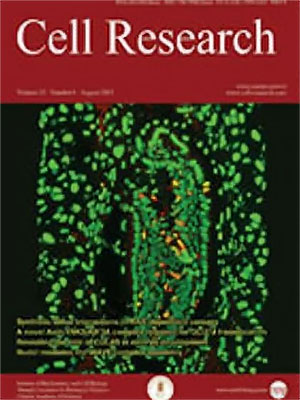
Volume 14, No 2, Apr 2004
ISSN: 1001-0602
EISSN: 1748-7838 2018
impact factor 17.848*
(Clarivate Analytics, 2019)
Volume 14 Issue 2, April 2004: 111-116
REVIEWS
Peptide nucleic acid (PNA) binding-mediated gene regulation
Gan WANG, Xiaoxin S XU
Institute of Environmental Health Sciences, Wayne State University, 2727 Second Avenue, Detroit, MI 48201, USA
Correspondence: Gan WANG(wang@wayne.edu )
Peptide nucleic acids (PNAs) are synthetic oligonucleotides with chemically modified backbones. PNAs can bind to both DNA and RNA targets in a sequence-specific manner to form PNA/DNA and PNA/RNA duplex structures. When bound to double-stranded DNA (dsDNA) targets, the PNA molecule replaces one DNA strand in the duplex by strand invasion to form a PNA/DNA/PNA [or (PNA)
2/DNA] triplex structure and the displaced DNA strand exists as a single-stranded D-loop. PNA has been used in many studies as research tools for gene regulation and gene targeting. The D-loops generated from the PNA binding have also been demonstrated for its potential in initiating transcription and inducing gene expression. PNA provides a powerful tool to study the mechanism of transcription and an innovative strategy to regulate target gene expression. An understanding of the PNA-mediated gene regulation will have important clinical implications in treatment of many human diseases including genetic, cancerous, and age-related diseases.
FULL TEXT | PDF
Browse 2248


